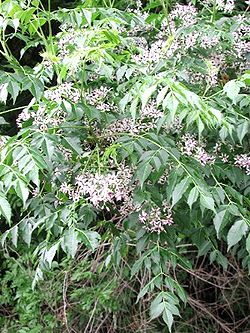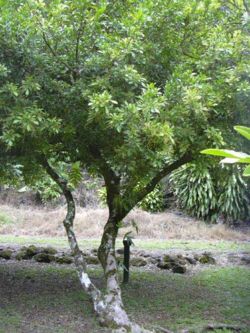| Meliaceae Temporal range: | |
|---|---|
 | |
| Melia azedarach in flower | |
| Scientific classification | |
| Kingdom: | Plantae |
| Clade: | Tracheophytes |
| Clade: | Angiosperms |
| Clade: | Eudicots |
| Clade: | Rosids |
| Order: | Sapindales |
| Family: | Meliaceae Juss. [1] |
| Subfamilies | |
Meliaceae, the mahogany family, is a flowering plant family of mostly trees and shrubs (and a few herbaceous plants, mangroves) in the order Sapindales.
Contents
They are characterised by alternate, usually pinnate leaves without stipules, and by syncarpous, [2] apparently bisexual (but actually mostly cryptically unisexual) flowers borne in panicles, cymes, spikes or clusters. Most species are evergreen, but some are deciduous, either in the dry season or in winter.
The family includes about 53 genera and about 600 known species, [3] with a pantropical distribution; one genus ( Toona ) extends north into temperate China and south into southeast Australia, another (Synoum) into southeast Australia, and another (Melia) nearly as far north. They most commonly grow as understory trees in rainforests, but are also found in mangroves and arid regions. [4]
The fossil record of the family extends back into the Late Cretaceous. [5]

